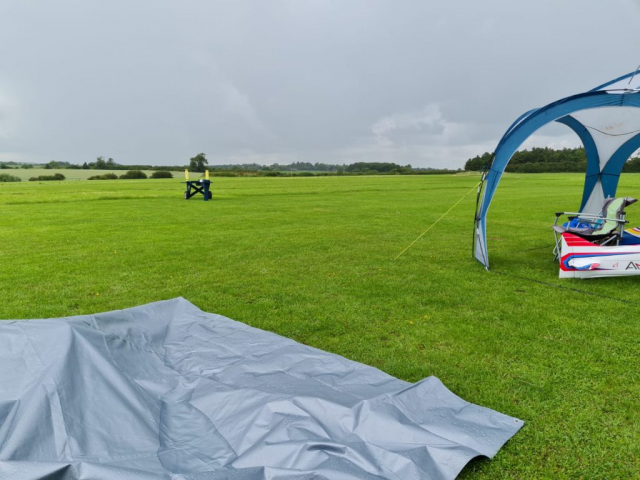That heading got your attention!
We recently found out that Steve snuck off to BMFA Buckminister last weekend to compete in the BMFA National Championships 2021.
First off a little bit of background on F3A (pattern) flying.
F3A aerobatics has rules and aerobatic schedules which are recognised all over the world. Models must fit into a 2 metre by 2 metre box, you may have heard reference to 2 metre models. The weight of our aircraft is limited to 5 kilograms weighed without fuel if IC, or with batteries if electric powered. Any aircraft that will do a loop and a roll is capable of competing at entry level to fly the Clubman Schedule. At the top level of competition there has always been a quest to find the perfect model (next time you see Steve ask him about his quest). Aircraft are specially designed and trimmed to fly smoothly in all attitudes of flight and the majority are now powered by electric motors.
The Fédération Aéronautique Internationale (FAI) who are the World Air Sports Federation, change the top schedules, the FAI Advanced, (adopted as our Masters schedule) Preliminary and Final schedules every two years. This year they flew the Preliminary (P-21) and Final (F-21). These schedules are also flown at the European and World Championships which are held in alternative years and at World Cup League events around Europe. F3A is a truly international sport and these schedules are being flown at clubs and competitions all over the world.
All the GBRCAA schedules (Clubman, Intermediate, and Masters) are designed to help members progress with their flying and compete at their own level of ability at competitions held most weekends around the country, those competing to be BMFA Nationals and British Champion will fly the FAI Preliminary and Finals schedules.
Pilots attempt to fly perfect shapes, perfectly straight lines with perfect axial rolls and to do this our aircraft may be home built in the traditional way from balsa wood or they may be professionally built using balsa and many composite materials finished with film or tissue and paint. You will see canalisers mounted on the top of the fuselage used to smooth the airflow over the rudder and tail plane and airbrakes to slow the model in down lines and may be contra rotating propellers.
The judges are seated about 8 metres behind the pilot who stands at the centre of a 120 degree V marked out on the runway and by markers at 150 metres out which indicate the ‘aerobatic box’. This line 150 metres out from the runway is parallel to the runway and if a model is flown deeper than this or outside the 120 degree lines which are projected to the horizon they will face stiff downgrades from the judges for any manoeuvres which infringe the limits.
Is all that clear? Sound easy right?
Here’s the calling card for the Preliminary schedule P-21
Most of that is lost on me, so I’ll help us all out with the aresti diagram
All clear now? Good.
Well I’m please to finally say Steve did extremely well and managed to win himself yet another trophy! How many is this now Steve?
Please join me in congratulating Steve in winning the Gold Award!
Here’s a few extra pictures that Steve took during the event.








[…] those of you that are new to F3A you may want to read this article first before continuing. It briefly explains what F3A is, the schedules and how it’s judged… […]